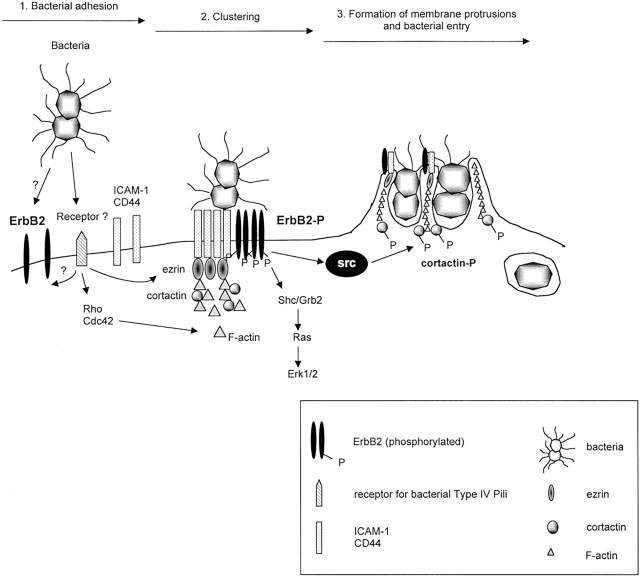Figure 9.
Schematic representation of the signaling pathways activated by N. meningitidis and involved in bacterial entry into endothelial cells. (1) Type IV pili initiate the interaction of virulent, capsulated N. meningitidis with human endothelial cells by interacting with a cellular receptor that remains to be clearly identified. Bacteria then proliferate, locally forming a colony at their site of attachment on the cell surface. (2) This pili- dependent adhesion induces, through a Rho GTPase-independent pathway, the recruitment of ezrin and moesin, two proteins that link the cellular membrane to the actin cytoskeleton, and the clustering of several transmembrane proteins: ErbB2 and the ezrin binding proteins CD44 and ICAM-1. (3) The activation of both Rho and Cdc42 GTPases induces a localized polymerization of cortical actin, leading to the formation of membrane projections reminiscent of epithelial microvilli structures, which surround single bacteria and provoke their internalization within endothelial intracellular vacuoles. Downstream of bacteria- induced ErbB2 activation are the ras/MAPK signaling pathway, and the src tyrosine kinase which phosphorylates cortactin, and is involved in bacterial entry.

